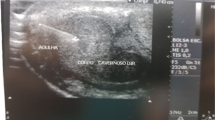Summary
A total of 310 intracavernous injections of papaverine (ICIP) were performed in 100 impotent patients. The results were compared to those of multidisciplinary etiologic investigations, including nocturnal penile tumescence monitoring, the artificial erection test and arteriography. The response to ICIP was fairly reproducible. It differed slightly according to the position of the patient (supine or upright). We observed prolonged erections in 14% and priapism in 4% of the patients that resulted in 2 definitive iatrogenic impotences. The response to 80 mg ICIP was positive (fully rigid erection) in 17% of the organic patients, most of whom were neurogenic and endocrine patients. It was negative (no response or soft erection) in most cases with severe venous incompetence or severe arterial occlusion, but also in 44% of the patients without important vascular abnormality, and 33% of the well-documented psychogenic cases. Apart from self-injections, 27% of the patients (mainly psychogenic cases) were improved by repeating the injections. We observed a high rate of complications among 6 patients who performed self-ICIP, including 2 cases of fibrosis of the cavernous bodies. In conclusion, ICIP is of real, but limited, value in the assessment of the vascular component in impotence. It can also improve certain patients, but involves a significant risk of priapism. Today, less dangerous drugs must be selected for the therapeutic application of ICI.
Similar content being viewed by others
References
Virag R (1982) Intracavernous injection of papaverine for erectile failure. Lancet II:938
Virag R, Frydman D, Legman M, Virag H (1984) Intracavernous injection of papaverine as a diagnostic and therapeutic method in erectile failure. Angiology 35:79
Bellinzoni G, Mauri M, Salvini A (1986) Use of papaverine in diagnosis of organic and psychogenic failure. IInd World Meeting on Impotence, Prague, abstract 11.8
Sarramon JP, Ghaddar Y, Rischmann P, Elman B (1986) Papaverine test value integrated to the other impotence exploration methods. IInd World Meeting on Impotence, Prague, abstract 7.7
Wespes E, Delcour C, Vandenbosch G, Rondeux C, Schulman CC (1986) Can papaverine test be the first step in the assessment of impotent patients? IInd World Meeting on Impotence, Prague, abstract 7.12
Dulac JP, Sangare SI, Perrin P (1986) Intérêt de l'injection de la papavérine dans les corps caverneux. Contraception Fertil Steril 14:69
Stief CG, Bahren W, Gall H, Scherb W, Thon WF, Altwein JE (1986) Preselection, indication and side effects of a therapy with vasoactive drugs (TVD). IInd World Meeting on Impotence, Prague, abstract 11.10
Zorgniotti AW, Lefleur RS (1985) Autoinjection of the corpus cavernosum with a vasoactive drug combination for vasculogenic impotence. J Urology 133:39
Buvat J, Lemaire A, Buvat-Herbaut M, Guieu JD, Bailleul JP, Fossati P (1985) Comparative investigations in 26 impotent and 26 non impotent diabetic patients. J Urology 133:34
Buvat J, Lemaire A, Dehaene JL, Buvat-Herbaut M, Guieu JD (1986) Venous incompetence: critical study of organic basis of high maintenance flow rates during artificial erection test. J Urology 135:926
Buvat J, Marcolin G, Lemaire A, Buvat-Herbaut M (1987) Moxisylyte, a safer drug for intracavernous injections: assessment of its diagnostic and therapeutic interests in 100 impotent patients. J Urology (in press)
Brindley GS (1983) Cavernosal alpha-blockade: a new technique for investigating and treating erectile impotence. Br J Psychiatr 143:332
Virag R, Daniel C, Sussman H, Pouilly P, Virag H (1986) Self intracavernous injection of vasoactive drugs for the treatment of psychogenic and neurologic impotence (late results in 109 patients). IInd World Meeting on Impotence, Prague, abstract 11.1
Porst H, van Ahlen H (1986) Intracavernosal pharmacotesting in the diagnosis of impotence. IInd World Meeting on Impotence, Prague, abstract 4.8
Beretta G, Chelo E, Negri L, Zanollo A (1986) Autoinjection of corpus cavernosum with papaverine for impotence in spinal cord injury. IInd World Meeting on Impotence, Prague, abstract 11.13
Author information
Authors and Affiliations
Rights and permissions
About this article
Cite this article
Buvat, J., Lemaire, A., Marcolin, G. et al. Intracavernous injection of papaverine (ICIP). World J Urol 5, 150–155 (1987). https://doi.org/10.1007/BF00326822
Issue Date:
DOI: https://doi.org/10.1007/BF00326822




